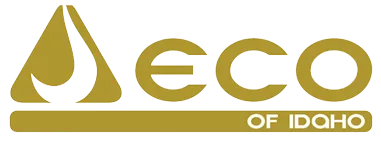Blog

What’s the Difference Between Grease Trap Pumping and Grease Trap Cleaning?
Introduction
If you operate a commercial kitchen in Idaho, keeping your grease trap working properly is essential — not just for plumbing, but for compliance, hygiene, and cost control. But you may have asked: “Should I be pumping my trap, cleaning it, or both?” In this article we’ll clarify the distinct roles of grease trap pumping and grease trap cleaning, show when each service is needed, and help you decide what’s best for your business.
Why Your Grease Trap Matters
Your grease trap intercepts fats, oils, grease (FOG) and food solids from your kitchen wastewater before they enter the sewer system. Over time FOG and solids build up, reducing flow, creating odors, and inviting blockages or fines. A well-maintained grease trap protects your plumbing, your licence, and your bottom line.
Grease Trap Pumping
What is it and why it matters
Pumping refers to the removal of the accumulated liquids, grease layers and solids inside the trap using a vacuum truck or specialized equipment. The purpose is to restore flow and prevent overflow or backups. The process is relatively fast and is often scheduled more frequently.
The pumping process
A licensed hauler or technician opens the access cover and uses suction equipment to extract the waste.
The contents (liquid, semi-solid grease, food residue) are collected and transported for proper disposal.
The trap is returned to service with most waste removed.
When and how often
Pumping is typically required on a regular basis, depending on your kitchen’s volume and the size of your trap. If you notice slow drainage or grease surfacing, you may be due for a pump-out. While quite routine, pumping alone doesn’t address hardened deposits or full system cleaning.
Grease Trap Cleaning
What cleaning involves
Cleaning goes beyond the basic pump-out. It includes removing all waste, then scrubbing walls, baffles, lids and internal components to remove hardened grease, sludge and residues. It’s a deeper service designed to restore optimal performance and cleanliness.
The cleaning process
Remove all contents of the trap (liquid, grease, solids).
Scrape and scrub internal surfaces, baffles, seams.
Rinse and inspect for damage.
Document the condition and service performed.
When cleaning is needed
Cleaning should be scheduled periodically — less frequently than pumping but essential for long term performance. Especially when your trap shows signs of degeneration (persistent odor, grease seepage, slow performance) or if you’ve recently had an overflow or violation, then a full cleaning is recommendable.
Pumping vs Cleaning — Key Differences
Understanding the difference helps you plan a maintenance strategy:
Scope: Pumping removes waste; cleaning removes waste and condition-restores the trap.
Frequency: Pumping is more frequent. Cleaning is more infrequent but more intensive.
Cost: Pumping tends to cost less per service; cleaning costs more but may save on long term issues.
Benefit: Pumping keeps things running; cleaning ensures optimal hygiene, compliance, and longevity.
How to Decide What Your Business Needs
Track your trap’s performance: slow drains, odors, or grease surfacing signal the need for more than just pumping.
Match service to volume: high-output kitchens may need frequent pumping and periodic cleaning.
Budget for both: regular pumping plus periodic cleaning is the most effective strategy.
Keep documentation: for compliance and inspection you’ll want records of both pumping and cleaning.
Choose a provider who offers both services and can advise on schedule based on your trap size, usage and local regulations.
FAQs
What happens if I only pump and never clean?
You’ll remove bulk waste but leave hardened buildup on walls and baffles. Over time that reduces capacity, causes odors and may lead to more frequent issues than a simple pump-schedule would.
Is cleaning always required or only after problems?
Cleaning is best used as part of preventive maintenance rather than only reactive. Scheduling a clean every few service cycles prevents emergencies.
How often should I pump vs clean?
As a rule: pump every 1-3 months for busy kitchens; clean every 6-12 months depending on use, or sooner if you see warning signs.
Will the paperwork differ?
Yes. You’ll want manifests and records for each pumping event and more detailed service reports when you clean (noting condition, deposits removed, any repair needed).
Why does this matter for compliance?
Regulators expect you to maintain your grease trap such that FOG won’t enter the sewer system. Both pumping and cleaning help you demonstrate that commitment and avoid fines or shutdowns.
Conclusion
Pumping and cleaning are both essential for proper grease trap maintenance, but they serve different purposes. For Idaho restaurants and commercial kitchens, combining regularly scheduled pumping with periodic deep cleaning ensures your trap stays functional, efficient and compliant. Treat your grease trap like the crucial system it is — plan for both, maintain records, and partner with a trusted service provider to keep your kitchen running smoothly.
Our Services
Helpful Links
Contact Information
Phone: (208) 867-4607
Email: [email protected]
Address: 1990 S Cole Rd, Boise, ID 83709, United States of America
Business Hours:
Mon - SunOpen 24 Hours
© 2025 All Rights Reserved | Eco of Idaho
